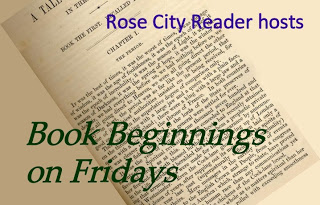Having read a bunch of novels recently, I decided to quickly post summaries of my thoughts before I move on.
Spoilers likely!
The Last Sister* by Kendra Elliot (2020)
(*Amazon Affiliate link)
Summary: When Emily Mills discovers a man dead hanging in a tree, she is disturbed by the memories of finding her own father hanging under similar circumstances twenty years before. Her phone call to report the crime to the FBI brings special agent Zander Wells with his partner special agent Ava McLane to the scene. When Zander begins to investigate her father’s death to see if the crimes are related, Emily wonders about her older sister’s involvement and what she really witnessed all those years ago.
Notes: The Last Sister drew me right in. It was enjoyable not to notice any frayed edges or issues, but just disappear into the story. There were some interesting twists, most of which were believable. I also like that author Kendra Elliot uses a few law enforcement (FBI special agents) characters from previous novels, but shows them in a different light or brings someone who was a secondary character in a previous book up front to be a main character. It is less confining than a series with only one main character, yet there are familiar faces.
Although I totally get that the crime has to be of a certain type for the FBI to be called in, the hate crime/racism aspect was pretty disturbing.
Love meter: ♥♥♥♥
Vanished by Kendra Elliot (2014)
Summary: When eleven-year-old Henley disappears on her way to school, the FBI is on the case. Special Agent Ava McLane stays with the family to keep them safe and informed. Police detective Mason Callahan, who was once married to Henley’s stepmom, also arrives to help find the girl, even though someone he knew through work has just been murdered. As clues are uncovered, Ava begins to suspect that more is going on than a simple kidnapping and other family members may be targeted as well.
Notes: Once again, it was easy to lose myself in this novel. I liked that the family was a complicated one, with step moms and step dads in the mix. Although they all had the same goal, conflicts still arose because of their histories. The plot moved along smoothly and the characters were for the most part well developed. I liked the romance that emerged, also. It added some spice.
Love meter: ♥♥♥♥
The Lucky One by Lori Rader-Day (2020)
(*Amazon Affiliate link)
Summary: Alice Fine works in a construction office with her dad by day and volunteers with an online group that matches unidentified bodies (“Does”) with missing persons at night. Unlike many of the other members of the group — who started because they have missing relatives — Alice was drawn to the work because she herself was a missing person when she was very young. She was rescued in less than a day, but her kidnapper was never caught. When Alice recognizes a man from a photograph on the missing persons website, she soon realizes he is the one who kidnapped her so long ago. With the help of other volunteers, Alice delves into the mystery of who he was and why he took her.
Notes: I really like this book. I like that the author was inspired to write it by real events in her neighbor’s life. I like that the amateur sleuths were based on actual volunteers who run The Doe Network website. I like that Alice’s memories may or may not be reliable, but that her present day narration is reliable.
My only criticisms were that a couple of the male characters had odd character arcs or seemed to get tossed into and out of the story randomly. One example was Jimmy, who was the son of one of the co-owners of the construction business. Jimmy stole Alice’s backpack and hated the fact she secretly owned the business that he thought he would inherit. Except he was in love with her in the end/climax scene?
Merrily’s potential love interest(?), Vasquez, more or less also randomly shows up at the end climax scene. It isn’t clear what his motives are, who he is investigating, and why he keeps popping up except that Merrily needs a guy.
Still, the rest works very well.
Love meter: ♥♥♥♥♥
The Secret Place by Tana French (2014)
Summary: A teenage student at a boarding school for boys, Chris Harper, was murdered a year ago, but the perpetrator was never found. When sixteen-year-old Holly from the neighboring girls’ school shows up at Detective Stephen Moran’s desk in the cold case division with a clue, he uses it to join Lead Detective Antoinette Conway of Dublin’s Murder Squad as she reopens the case. Nothing is as it seems, however, as Holly’s friends and rival cliques are determined to muddy the waters.
Notes: Finally, a Tana French novel to truly love (see my complaints of other novels on the author page). The writing is still gorgeous, as with all the others, but this time the police do their jobs and the ending is satisfying. Yes, Tana French can pull it off.
What is most delightful in this novel is the theme of lies and deception. It is a merry-go-round ride as Moran and Conway try to deceive the girls they interview into revealing what happened and the girls do their best to lead the detectives astray. For that matter, Moran is trying to butter Conway up so he can move to the Murder Squad. Who is lying for the “right” reasons? Perhaps they all are.
Love meter: ♥♥♥♥♥
Rough Day: Detective Lottie King Mystery Short Stories* by Shelley Coriell
(*Amazon Affiliate link)
Summary: Author Shelley Coriell introduced Detective Lottie King as a minor character in the first book of her Apostles series, The Broken (reviewed here). Lottie was so popular, Shelley decided to write more about her. By the way, Shelley is a bit of a foodie and she includes Lottie-inspired recipes — and drinks(!) — between each chapter.
The stories range from Lottie working with her granddaughter’s Girl Power group to solve a locked room mystery, to helping a twelve-year-old boy find his missing grandfather.
Notes: Given that this is a collection of short stories, it is easy to put it down between chapters, which I did over a year ago. When I picked it up again, I had forgotten how much I loved Lottie. She plows right in and gets the job done, all the time wearing the most amazing shoes.
I went to see if Shelley Coriell had any new novels out, but her last apparently was another collection of Lottie short stories published in 2017. Hope that is remedied soon.
Love meter: ♥♥♥♥






















